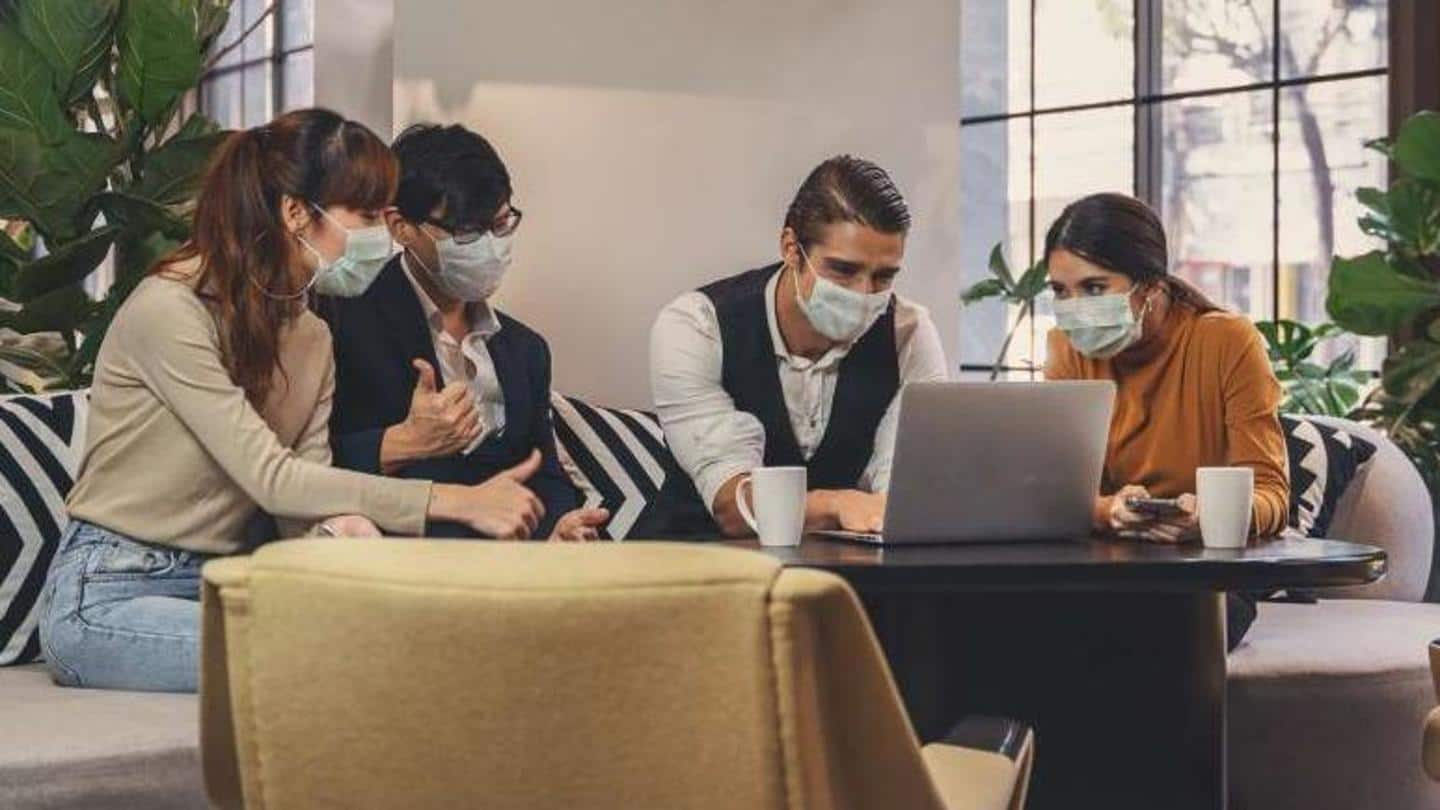
New tool can calculate COVID-19 transmission risk in poorly-ventilated places
What's the story
Researchers have developed a new online tool that can calculate the risk of COVID-19 transmission in poorly-ventilated places.
The research published in the journal Proceedings of the Royal Society A, shows that when two people are in such spaces without wearing a mask, prolonged talking is far more likely to spread the virus than a short cough.
Details
Speaking releases aerosols that can spread easily
The researchers from the University of Cambridge and Imperial College London in the UK noted that while speaking we exhale smaller droplets, or aerosols, which spread easily around a room, and accumulate if ventilation is not adequate.
In contrast, coughing expels larger droplets, which are more likely to settle on surfaces after they are emitted, they said.
Findings
Majority of COVID-19 cases are spread through indoor transmission: Scientists
Scientists agree that the vast majority of COVID-19 cases are spread through indoor transmission, whether via aerosols or droplets.
The researchers noted that it only takes a matter of seconds for aerosols to spread over two meters when masks are not worn, implying that physical distancing in the absence of ventilation is not sufficient to provide safety for long exposure times.
Mathematical models
Tool shows how the virus spreads in different indoor spaces
However, masks slow the breath's momentum and filter a portion of the exhaled droplets, in turn reducing the amount of virus in aerosols that can spread through space, they said.
The team used mathematical models that show how the SARS-CoV-2 virus, which causes COVID-19, spreads in different indoor spaces, depending on the size, occupancy, ventilation, and whether masks are being worn.
Details
Airborne.cam helps understand factors affecting risk of indoor transmission
Based on the results, the researchers developed Airborne.cam, a free, open-source tool that helps users understand how ventilation and other measures affect the risk of indoor transmission, and how that risk changes over time.
The team used characteristics of the virus, such as its decay rate and viral load in infected individuals, to estimate the risk of transmission in an indoor setting.
Benefits of the tool
Useful for people managing shops, workplaces and classrooms
They showed that, for instance, the infection risk after speaking for one hour in a typical lecture room was high, but the risk could be decreased significantly with adequate ventilation.
Airborne.cam can be used by those managing public spaces, such as shops, workplaces, and classrooms, in order to determine whether ventilation is adequate, the researchers said.
Quote
Tool can help modify day-to-day activities to suppress risk
"The tool can help people use fluid mechanics to make better choices, and adapt their day-to-day activities and surroundings in order to suppress risk," said study co-author Savvas Gkantonas, who led the development of the app with Pedro de Oliveira from Cambridge's Department of Engineering.
Safety measures
Investigation still on to understand all aspects of transmission
"We're looking at all sides of aerosol and droplet transmission to understand, for example, the fluid mechanics involved in coughing and speaking," said study senior author Professor Epaminondas Mastorakos, also from the Department of Engineering.
"We hope these and other new results will be implemented as safety factors in the app as we continue to investigate," Mastorakos added.